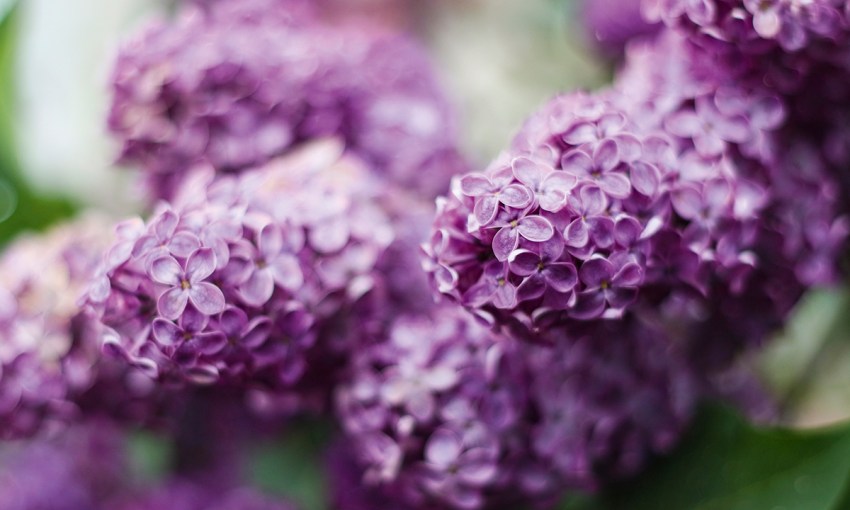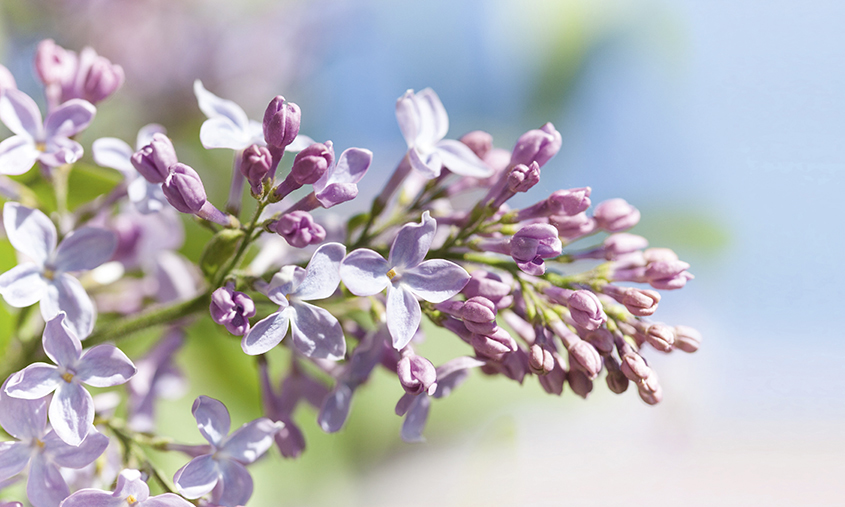The scent of spring, lilacs are pleasing plants for any garden and can even be grown in large pots.
In the garden: A flurry of fragrant flowers
Lilacs are medium to tall deciduous shrubs, grown for their highly perfumed pink, lilac, purple or white flowers that generally appear in the spring. These dense clusters of flowers are framed by the dark green heart-shaped leaves.
Lilacs have a long history, even appearing in ancient Greek mythology. It’s said that Pan was deeply in love with a nymph named Syringa and used the long, hollow reeds of a lilac shrub to create the first pan pipe in her honour. This is how lilac got its Latin genus name: syringa.
Lilacs come in a range of sizes that suit every garden situation. If you have a large garden, several lilacs can be planted en masse, or some varieties can be grown successfully in large tubs or barrels for smaller spaces. When these containers are placed near the house, one can enjoy the sweet honey fragrance up close. They make an ideal background shrub in a flower border and the lilac bush provides a wall of greenery after their flowering season is over.
It’s best to purchase an established lilac in spring or autumn, always look for one with three or four main branches. Plant in full sun in well-drained and well-prepared dry soil. Lilacs are generally happy in most soils, possibly favouring alkaline a little more than acid. If your soil is very acidic, you can improve it by digging a small amount of garden lime into the ground before planting the shrub. Water well after planting and add a thick layer of mulch, leaving a small buffer for air circulation around the lilac trunk.
In early summer, after the shrub has finished flowering, cut off the spent flowers and prune it lightly to re-shape the bush; this will encourage future blooms. If you want to encourage birds into your garden, leave some blooms to set seed for them to eat.
Hard pruning can be undertaken during the winter if you wish to reduce the size or rejuvenate the lilac. Cut back to about one metre and it will soon reshoot, however it probably won’t flower the first year after the harsh cut back.

Take cuttings from the lilac plant in summer and place in sharp sand that is continuously kept moist, these should be ideal to plant out in late autumn. Lilac shrubs produce suckers, which are little plantlets that grow from underground roots. If you spot them and they become a problem, dig down below the surface level and tear them off at the roots.
Lilac blight can be a problem in some areas. This is a disease that imitates frost damage, but mostly attacks white flowering lilacs. It is at its worst in humid, mild weather. If detected, cut the affected wood back to a healthy bud and spray with a copper fungicide.
Syringa is a genus of about 25 cultivated species of flowering plants, with many more hybrids and more than 1000 varieties to choose from, ranging from dwarf to large trees. The most popular lilac is Syringa vulgaris. All species are members of the olive family, however they are not regarded as an aggressive plant. Lilacs can grow from a metre in height right up to a taller variety of 6m with a span of 2-3m in width.
Syringa microphylla, which bears stunning lilac to pink blooms, grows to 1.5m and is ideal for a smaller garden area, while for a large area, plant Syringa reticulate, which grows to a height of about 7m and has spectacular cream flowers. One that has a deeper coloured flower is the outstanding S. sensation variety – the blooms are almost burgundy in colour, framed with a white border.
Parry’s lilac Syringa x chinensis is a hardy, deciduous, drought tolerant new variety that has large clusters of pink to lilac flowers. It is a non-suckering variety and makes an ideal plant for any garden. It should be planted at between 1.5 and 2m apart and flowers are produced from the previous year’s growth.
Whatever lilac you choose for your garden or patio, you will be rewarded by the magnificence of the soft pastel blooms and the beautiful fragrance of lilac.
This story first appeared in the Spring 2019 issue of SALIFE Gardens & Outdoor Living magazine.
including free delivery to your door.



